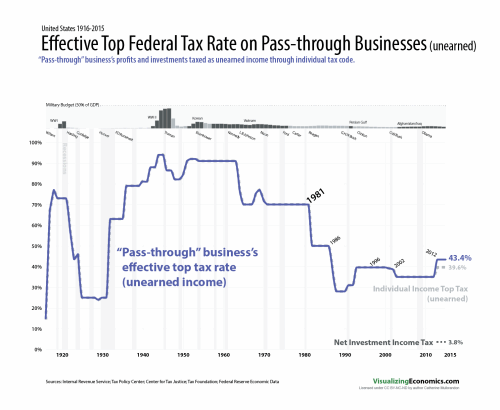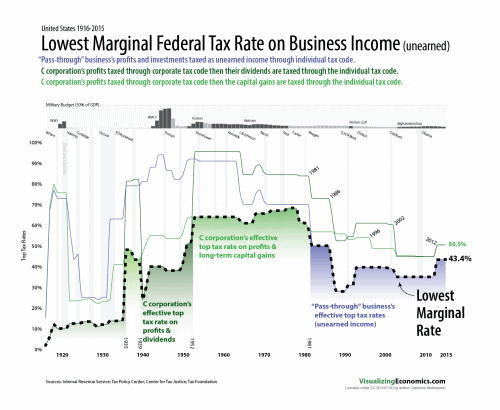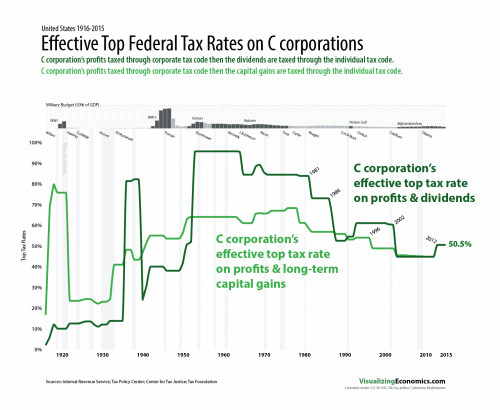Part one of my series: Taxing Businesses
In my earlier post on the number of returns and net income by business structure, you can see the share of business returns filed by C corporations has dropped 16.6% to 4.9% 1980-2012 with pass-through businesses filing the majority of business returns. However, sole proprietorships, although the majority of pass-through businesses, are less than 10% of net business income.
So, I have created a series of graphs looking at the top tax rates on C corporations vs pass-throughs, focused on the effective top rates for high incomes businesses. Since pass-through businesses don’t pay the corporate income tax, their profits and investments are taxed through the individual tax code as either earned or unearned income.
The different business structures that "pass-through" business income to the individual include:
Partnership's partner
S corporation's owner
LLC's member
Sole Proprietor's individual owner
The effective tax rate on pass-through businesses has drop dramatically since the 1950s. While rate was the same for earned and unearned income except in ‘70s, ‘90s, early ‘00s.
Earned Income
In this scenario of treating the business income as "earned income" that means top individual tax rate combined with the medicare top rate (since the 1990s) when the cap on max income tax by medicare was removed. To help pay for ACA an additional Medicare surcharge was added for high income earners in 2013.
Unearned Income
“Pass-through” business’s profits and investments taxed as unearned income through individual tax code.
In this scenario of treating the business income as "unearned income" that means taking the top individual tax rate add combine it with the net investment income tax on high income earners. (to help pay for ACA)
Data Notes
Income Tax Parameters | Tax Policy Center (check their footnotes in the table for unearned rates)
Notes on removal of upper limits in 1994 and Additional Medicare Tax starting in 2013 | Topic 751 - Social Security and Medicare Withholding Rates








